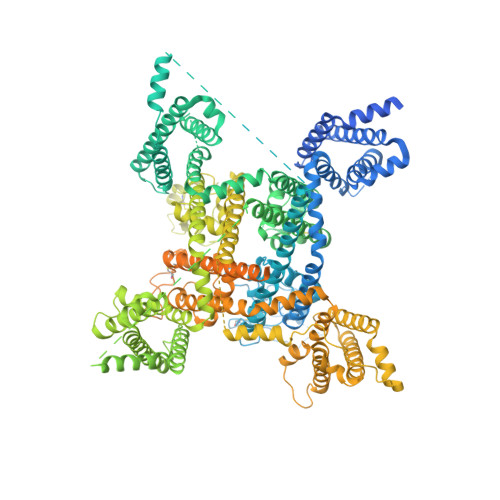Open-state structure and pore gating mechanism of the cardiac sodium channel.
Jiang, D., Banh, R., Gamal El-Din, T.M., Tonggu, L., Lenaeus, M.J., Pomes, R., Zheng, N., Catterall, W.A.(2021) Cell 184: 5151
- PubMed: 34520724
- DOI: https://doi.org/10.1016/j.cell.2021.08.021
- Primary Citation of Related Structures:
7FBS - PubMed Abstract:
The heartbeat is initiated by voltage-gated sodium channel Na V 1.5, which opens rapidly and triggers the cardiac action potential; however, the structural basis for pore opening remains unknown. Here, we blocked fast inactivation with a mutation and captured the elusive open-state structure. The fast inactivation gate moves away from its receptor, allowing asymmetric opening of pore-lining S6 segments, which bend and rotate at their intracellular ends to dilate the activation gate to ∼10 Å diameter. Molecular dynamics analyses predict physiological rates of Na + conductance. The open-state pore blocker propafenone binds in a high-affinity pose, and drug-access pathways are revealed through the open activation gate and fenestrations. Comparison with mutagenesis results provides a structural map of arrhythmia mutations that target the activation and fast inactivation gates. These results give atomic-level insights into molecular events that underlie generation of the action potential, open-state drug block, and fast inactivation of cardiac sodium channels, which initiate the heartbeat.
- Department of Pharmacology, University of Washington, Seattle, WA 98195, USA; Laboratory of Soft Matter Physics, Institute of Physics, Chinese Academy of Sciences, Beijing 100190, China. Electronic address: jiangdh@iphy.ac.cn.
Organizational Affiliation:




















